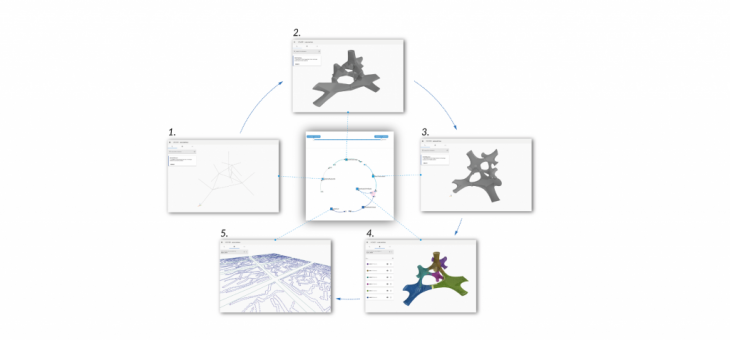Advanced Computational Tools – BIM seminar
CROSS-PLATFORM COLLABORATIVE TECHNIQUES FOR AEC
Introduction to the open source data platform Speckle
Faculty: Paul Poinet
 Advances in architectural geometry and the rising ubiquity of design computation and visual programming amongst architecture practices has led to the design and construction of more complex, larger scale architectural projects. Consequently, the Architecture, Engineering and Construction (AEC) industry has witnessed the emergence of custom technological solutions tailored within some of the most progressive architecture practices to better understand and visualize complex digital design workflows. From De Vries’ Activity Network [de Vries 1995], the discretization of logic through “staging” introduced by Front Inc. [Van der Heijden et al. 2015], to the “Metagraph” developed by Woods Bagot [Ringley 2017], these different approaches commonly address the visualization of the design workflow at the global level – across multiple users and/or documents, in contrast with the more local input-output data flow within a single Grasshopper or Dynamo file.
Advances in architectural geometry and the rising ubiquity of design computation and visual programming amongst architecture practices has led to the design and construction of more complex, larger scale architectural projects. Consequently, the Architecture, Engineering and Construction (AEC) industry has witnessed the emergence of custom technological solutions tailored within some of the most progressive architecture practices to better understand and visualize complex digital design workflows. From De Vries’ Activity Network [de Vries 1995], the discretization of logic through “staging” introduced by Front Inc. [Van der Heijden et al. 2015], to the “Metagraph” developed by Woods Bagot [Ringley 2017], these different approaches commonly address the visualization of the design workflow at the global level – across multiple users and/or documents, in contrast with the more local input-output data flow within a single Grasshopper or Dynamo file.
In such context, the present seminar, based on the open source data platform Speckle, aims to stage a high frequency iterative digital design workflow between several “simulated” stakeholders: design, analysis and reporting. The main goal of this seminar on BIM is to prototype a truly open, frictionless and integrative design process across the workshop participants.
Learning Objectives
At course completion the student will:
- Understand the basics of cross-platform data exchange and interoperability in Speckle.
- Be able to send and receive complex geometrical datasets to and from different software environments (Rhino, Grasshopper, Revit and Dynamo) via the Speckle platform.
- Be capable of setting up a project directory for an architectural design project, organize data streams, store consistent project information and collaborate with other project members via the Speckle admin web app.